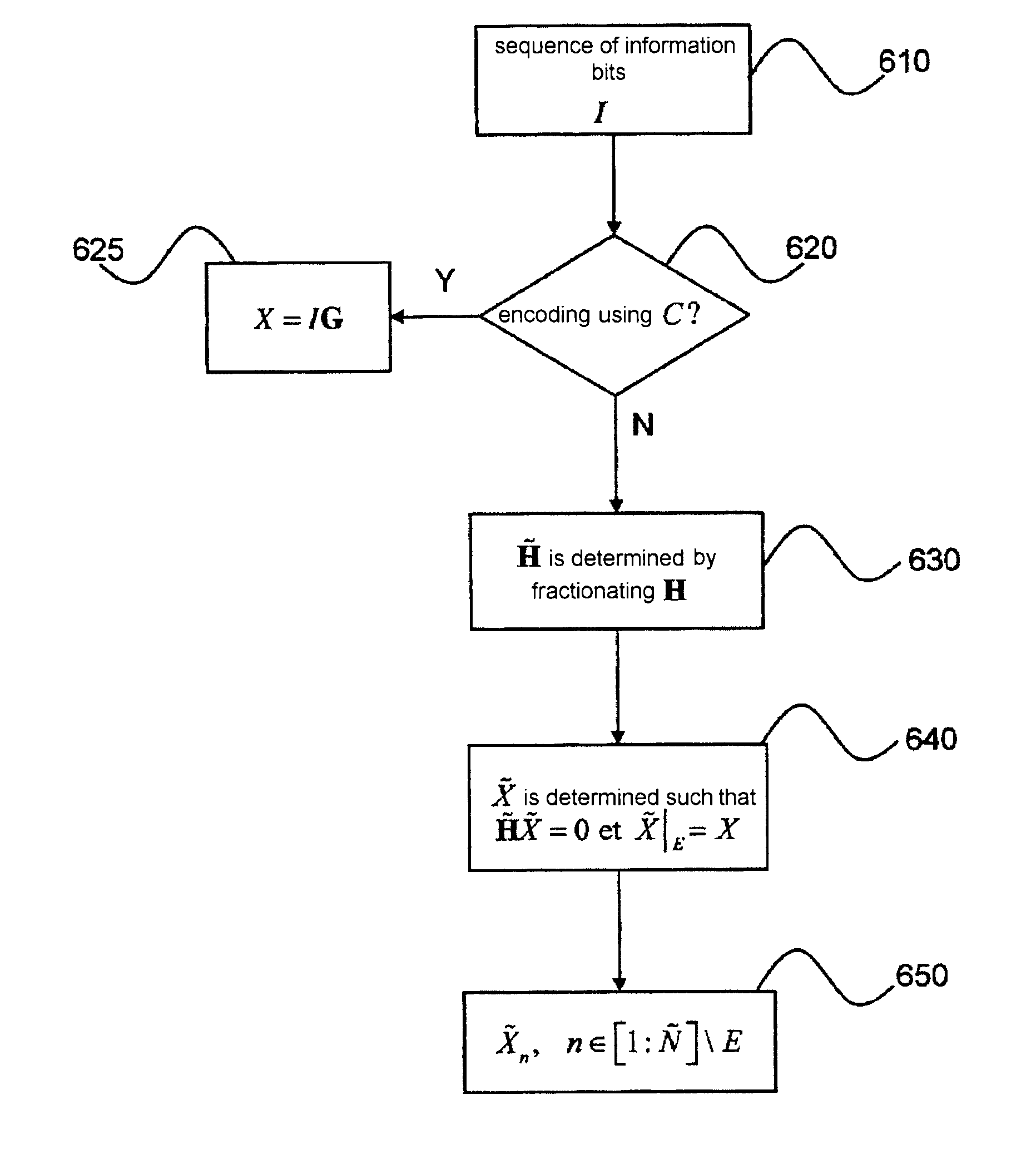LDPC coding process with incremental redundancy
- Summary
- Abstract
- Description
- Claims
- Application Information
AI Technical Summary
Benefits of technology
Problems solved by technology
Method used
Image
Examples
Embodiment Construction
[0068]In what follows, we consider a binary or non-binary LDPC code with check matrix H.
[0069]For the purpose of facilitating understanding of the invention, the construction of an LDPC with incremental redundancy will first of all be illustrated by a specific case.
[0070]Let the code C be defined by the check matrix H:
11111111111111111111111111111111111111111111111i1i2i3i4i5i6i7i8p1p2p3p4p5p6p7p8(1)
in which a vertical line has been used to distinguish the left portion relating to information bits and the right portion relating to parity bits. More specifically, the first eight columns of the matrix correspond to the eight bits of the information sequence I=(i1, i2, . . . , i8) and the last eight columns correspond to the eight bits of the parity sequence P=(p1,p2, . . . , p8. The empty cells in the matrix (1) correspond to zero values. The other elements define parity equations satisfied by the sixteen bits of the code word c=(I,P1). Thus the first row of matrix H expresses the cons...
PUM
 Login to View More
Login to View More Abstract
Description
Claims
Application Information
 Login to View More
Login to View More - R&D
- Intellectual Property
- Life Sciences
- Materials
- Tech Scout
- Unparalleled Data Quality
- Higher Quality Content
- 60% Fewer Hallucinations
Browse by: Latest US Patents, China's latest patents, Technical Efficacy Thesaurus, Application Domain, Technology Topic, Popular Technical Reports.
© 2025 PatSnap. All rights reserved.Legal|Privacy policy|Modern Slavery Act Transparency Statement|Sitemap|About US| Contact US: help@patsnap.com



